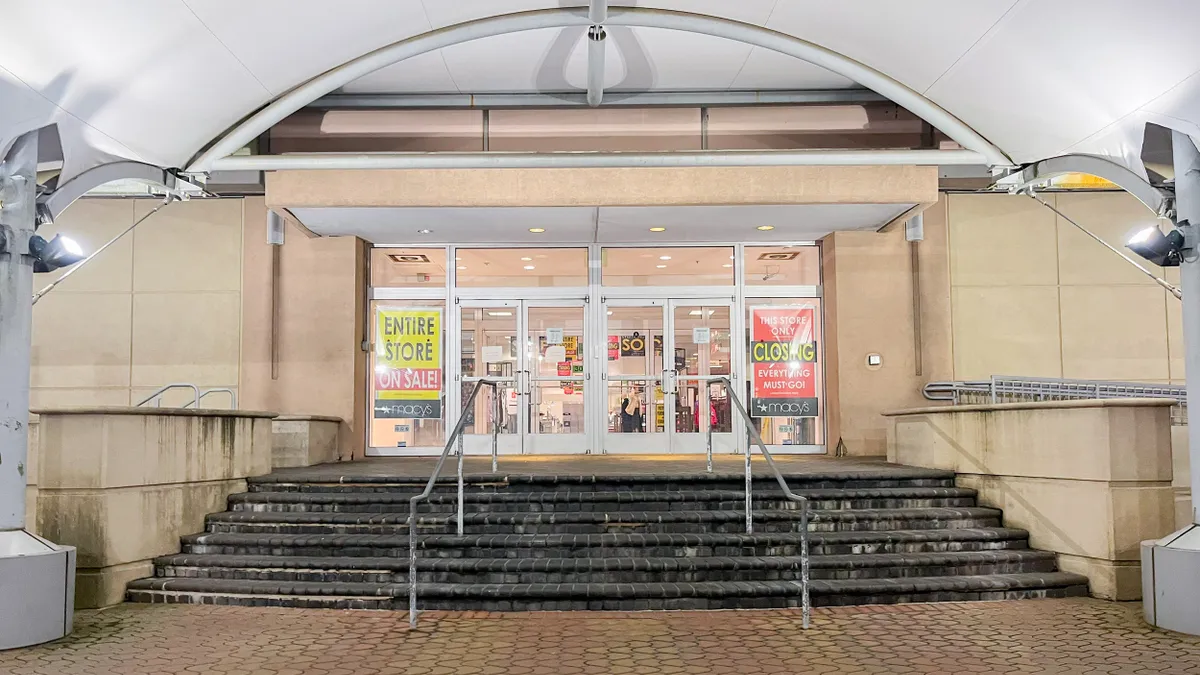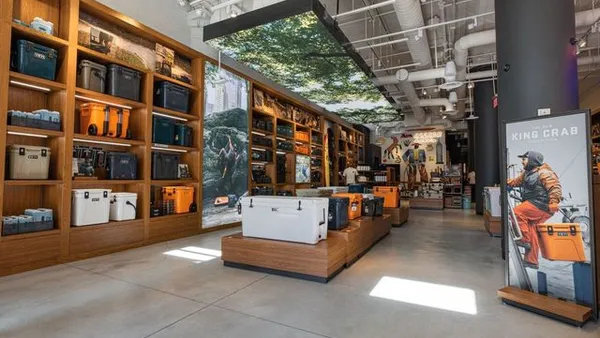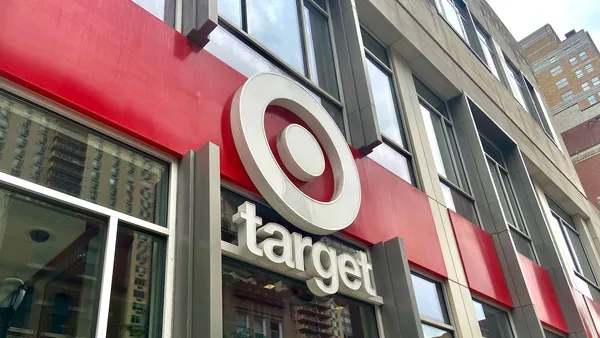Dive Brief:
-
Just over a third (36%) of retailers saw their e-commerce sales grow by more than 10% from 2015-2016, but that reflects a retail shakeout more than a retail apocalypse. The slow growth is caused by the 2008-09 recession, the decline of department stores, changes in shopping malls, digital and Amazon, according to a May survey of retail executives by e-commerce marketing platform Bluecore and NAPCO Research emailed to Retail Dive. More than half (56%) say they believe Amazon’s presence in their markets has increased in the past two years, a threat that many didn’t see coming, and almost 60% now consider Amazon at least something of a competitor, the report found.
-
Most retail executives say they know they must collect customer data to provide a personalized experience — and 72% have taken steps to do so — because Amazon does this especially well, but how to accomplish that isn’t always clear. According to the report, most retailers don’t have a clear strategy for how to respond to the consumer expectations set by Amazon, including free delivery and returns.
-
Nearly a third (30%) of retailers are joining the e-commerce giant to meet their goals, and partner with Amazon to some extent, researchers found. The online survey collected responses from 251 retailers from a variety of verticals, with more than half (53%) logging more than $1 million in annual revenue.
Dive Insight:
Amazon has been around for two decades, yet appears to be continually taking retail executives by surprise. Some appear to have underestimated Amazon’s Prime membership program, which now numbers 85 million U.S. members as of the second quarter ending June 30, a 35% increase in just one year, according to the latest numbers from Consumer Intelligence Research Partners.
"To be clear, Amazon is not necessarily killing off other retailers, but what it is doing is re-shaping customer expectations and raising the bar on what retailers need to do to win and retain loyal customers," according to the report’s authors. "And that shift has sent many retailers into a tailspin because of the speed with which Amazon reached this seemingly untouchable position."
Retailers, for example, thought they could meet the Prime challenge by also offering free shipping. But Amazon used the free two-day shipping perk (on most items) to remove friction from online shopping, amplifying that with superior speed, search and customer service, Bluecore and NAPCO noted. "We can count on one hand the number of retailers that can offer the shipping speed and selection that Amazon offers with its 20 million Prime-eligible products shipped from more than 100 global warehouses," the report says.
And Amazon has moved swiftly. In 2007, Amazon was smaller than J.C. Penney and Bed, Bath & Beyond, and now, 10 years on, the e-commerce giant is worth more than Walmart, Costco, Target, Best Buy, Macy’s, Kohl’s, Nordstrom, J.C. Penney and Sears combined and moves nearly six times as much e-commerce merchandise as the eight biggest brick-and-mortar retailers, according to the report. Last year, Amazon accounted for 53% of all e-commerce growth in the U.S.
The report authors point to Amazon’s 94% score on the Brand Key’s 2017 Customer Loyalty Engagement Index, (the top score among online retailers and most other companies across industries), which measures how well brands perform in customer engagement, loyalty and profits.
It adds up to a level of trust that is helping drive retailers to join in rather than simply compete. Its superior search capability — more than half of consumers begin at Amazon when shopping, while other research has found that Google and Yahoo have been declining in popularity — means that Amazon’s sponsored results could be a boon to other retailers on its site.
"Amazon is now taking advantage of the trust it built by providing such relevant search results in order to sell sponsored placements within these results," Bluecore and NAPCO say. "This move, which allows retailers to pay to be at the top of search results, presents a big opportunity for retailers, since Amazon’s customers trust that the search results they see will showcase the most relevant products."
While Amazon’s prowess has been difficult to fathom, it’s important to note that the turmoil in retail is not due to this juggernaut alone, the authors say. Rather, the 2008-09 recession, (which put pressure on struggling retailers); the decline of department stores, (which have seen an aggregate 35% revenue decline since their peak in early 2001); changes at shopping malls (related to the department store decline) and e-commerce’s role in fragmenting retail have all played a part, according to the report. For some, the answer is to partner with Amazon rather than compete with it.
"As retailers re-consider how Amazon fits into their distribution strategies, digital marketers need to take steps to put to work the customer data that our survey says they’ve been collecting," the report notes, and includes a suggestion to "start small" and realize it’s not too late. "Going forward, customers will shop where the product is relevant to them, and that will increasingly be a mix of Amazon and brands that provide an experience where relevant products are presented to customers both on the website and through various marketing channels."















